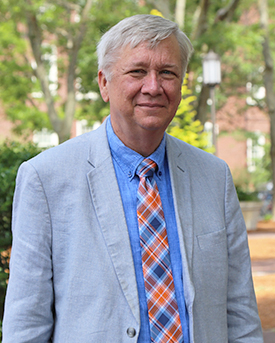A recently published article in Environment and Pollution includes an analysis of global research collaboration on the problem of vapor intrusion, and its increased interest worldwide. The research network on vapor intrusion is composed of 437 organizations and 1053 authors from 33 countries. The data suggests that the global research network for vapor intrusion has produced over a period of 54 years, 566 publications through 157 sources with approximately 50 percent of the work in the last ten years.

The article lists the top author as Brown Professor Eric Suuberg, followed by Yijun Yao Ph.D. ’12 (former Suuberg student and postdoc), and Kelly Pennell (another former Suuberg postdoc and now Director of the University of Kentucky SRP). Also on the list of top authors was Rui Shen Sc.M.’12, Ph.D.’14 (former Suuberg student and postdoc). Of the more 1,000 authors in the field, Suuberg is the most prolific with 39 publications followed by Yao with 33 publications and Pennell with 29.
Of the 437 organizations conducting research in the field, Brown University itself was second only to the United States Environmental Protection Agency in terms of total publications. Brown was the most productive in terms of papers in scientific journals.
This is an area that has, in the United States, received significant support from the National Institute of Environmental Health Sciences (NIEHS) through its Superfund Research Program (SRP). The analysis makes clear how funding specifically to the Brown University SRP has had an enormous impact in terms of worldwide publications on the topic. The paper describes both the total research productivity in terms of publications of various groups, as well as the linkages that have developed between the different groups throughout the world, using social network analysis.
The social network analysis of worldwide cooperation in the field showed strong connections between Brown University, Zhejiang University in China and the University of Rome “Tor Vergata” in Italy. It has been the collaboration between these three institutions that has led to development of new vapor intrusion screening tools, available as “freeware” at pvitools.net. In terms of cooperation between individual authors, the connection between Suuberg and former Brown researchers Yao and Pennell (now both field leaders at their own respective institutions) features very prominently.
In the U.S., programs such as the Superfund foster collaboration within the knowledge network. The analysis did, however, point to the fact that the collaboration network could use strengthening in some of its linkages, both in terms of academia and field practitioners and between different countries. In particular, there was a recommendation that there be more collaboration between high income countries (such as the U.S.) and those of middle and low income.
The paper also clearly demonstrates that strategic selection of funding in critical areas of environmental concern, such as that by NIEHS in the vapor intrusion field, can have a major impact in terms of advancing the science in that area, as well as fostering significant international collaboration in addressing the topic.